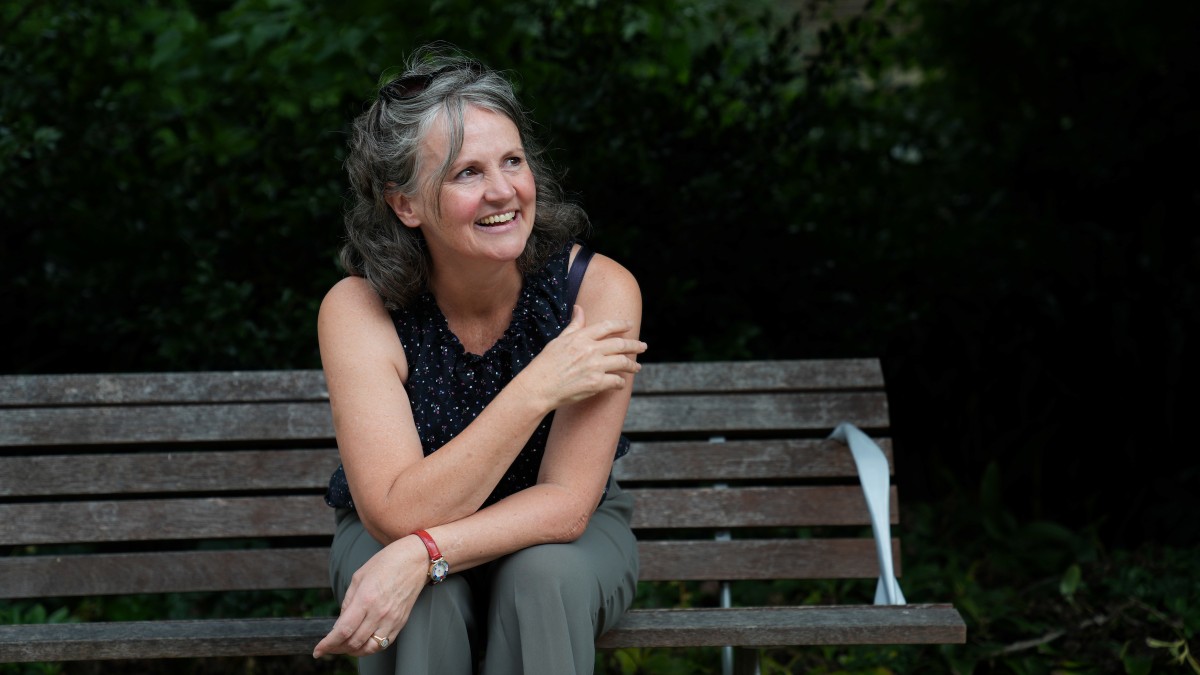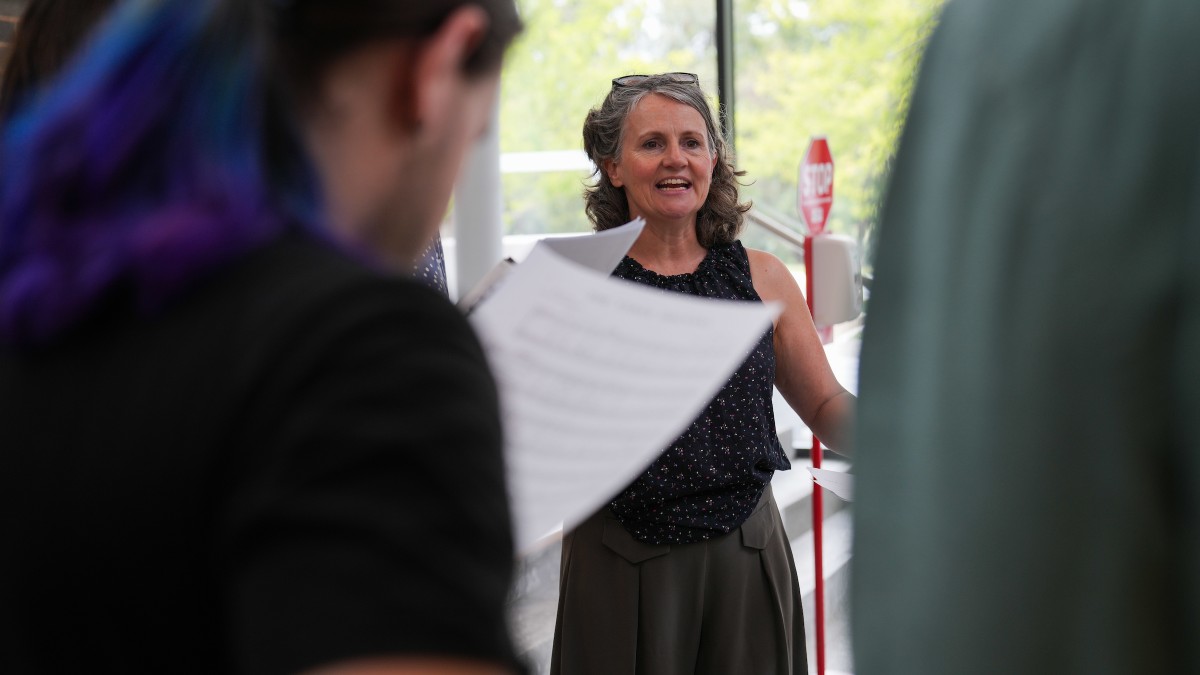Music has the power to move us, and here’s the proof

Sarah Mann wants to understand how opera singing can impact people emotionally. Photo: Tracey Nearmy/ANU
Sarah Mann wants more people singing: in the shower, at birthdays, in choirs and at concerts. Anywhere and everywhere.
“I’d been working in education and in the arts and I’d been seeing music and singing devalued in our society, compared to other societies, but also just generally,” Mrs Mann said.
“People are flat out just singing Happy Birthday or singing in the shower.
“Singing is a normal expression of yourself, and it’s part of being human – I don’t get why people don’t sing.”
Mrs Mann has made a career out of singing. The opera singer, former school music teacher and Australian National University lecturer in music education has always seen the effects music and opera singing can have on people. Now she wants to prove it.
While there is plenty of research on music and how it can give people chills, the interdisciplinary PhD student, who is working across the John Curtin School of Medical Research and ANU School of Music, realised there was little information around tone quality.
“There’s been lots of work done on music per se, and what causes chills and these big responses in music, so we know faster rhythms, pitch height – so as pitches get higher – people are more likely to get aroused, when there’s a big change of key, that causes goosebumps as well and lots of people have researched that,” Mrs Mann said.
“But tone quality is a much harder thing to get a handle on, it’s more elusive, especially vocal tonal quality.”
Mrs Mann created a library of three second voice samples to play to people taking part in her study. Each sample systematically varied vibrato – the “wobble” in the voice – as well as aspiration, or the breath, in the voice.
“I had a hunch that maybe it’s the vibrato because it’s a pretty clear characteristic of the singing – that wobble. And then this breathiness has always got me as well,” she said.
“You can put some extra breath into notes and they sound passionate, or you can make an audible breath in and it sounds passionate as well, so this use of audible breath, I was really keen to find out what impact that had on people.”
The research involved testing the arousal levels through pupil diameter, as people listened to randomly presented samples.
A person’s pupil diameter will respond to any sound, so Mrs Mann was able to unpick differences in pupil diameter according to subtle variations of vibrato and breathiness. The greater the pupil diameter, the greater the response to the sample.
People listened to 36 different iterations of the same sound, in different orders over a 40-minute session.
“You look into a dark machine – just a camera in a box essentially – and it controls light and you’re fixating on a point, so it controls your eye movement which also impacts dilation.
“We got a pattern for each of the sounds that came out of their pupil diameter. People respond differently to different tone qualities, but one of the really good things we found was that it doesn’t matter about your music background as to how you respond to optimal operatic singing.
“So there were changes between people with a musical background and people who hadn’t heard much opera singing. There were differences for every sound, except for operatic singing, and this straight vibrato, so that was very interesting to find.”

Sarah Mann wants to see more singing on the planet. Photo: Tracey Nearmy/ANU
Mrs Mann has experienced first-hand the way opera singing can impact people.
She’s seen people cry and gasp and get chills after just one note, and would approach these people after performances to try to understand what had caused the arousal.
“They’d say ‘that was amazing, I'm still feeling the jitters’ and I’d go ‘yeh, that’s Puccini or whoever’, and then I started thinking about it, and it really was the tone quality that does something to people.
“The responses I got from the kids [in the classroom] were things like just immobilisation - like mouths dropped and eyes open. Or there’d be kids who would jump up and down as soon as I sung. Some kids jump, some people compete with you, because kids don’t have inhibitions the way adults do. But the same kinds of things would happen to adults in audiences.
“You’d get people, blokes who just drop everything, and I’d see this from the stage and just go ‘yeh, it’s doing it for him, it’s doing it for her’.
“I could see it, so I thought, what's behind it? Then when I started reading, and there wasn't as much as I thought there would be. There’s a lot of uncanny mystery of the human voice, and not much about the actual voice.
“Our auditory environment is invisible so we don’t give it much credit, but it’s really important,” Mrs Mann said. “Because it’s invisible, I feel like we haven’t delved into it as much.
“Part of understanding what makes singing impactful on listeners – part of that has been me trying to figure out how I can provide evidence for singing being a useful and normal and wonderful thing.
“My end game is that there’s more singing on the planet.”
This article first appeared at ANU College of Science and Medicine.

